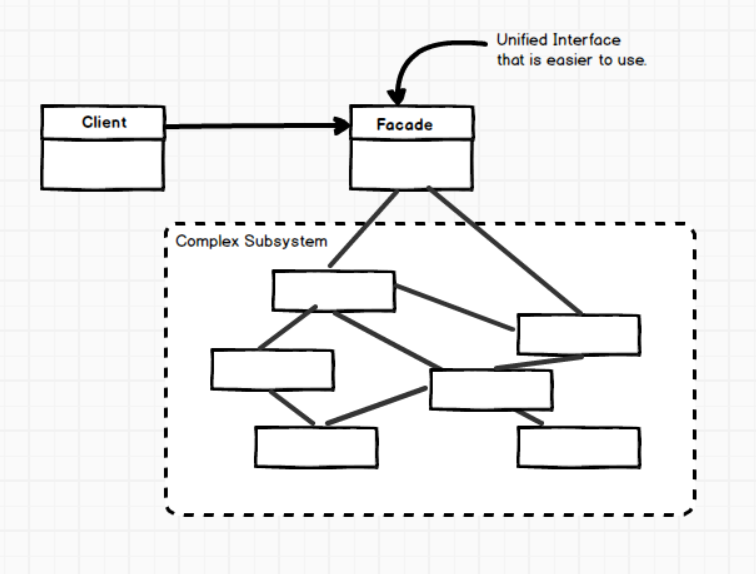The Facade Pattern provides a unified interface to a set of interfaces in a subsystem.
Facade defines a higher level interface that makes the subsystem easier to use.

- Use Facade to simplify and unify a large interface or complex set of interfaces.
- It decouples a client from a complex subsystem.
- It shields client from subsystem components, thereby reducing the number of objects that client has to deal with and making the subsystem easier for use.
- Promotes weak coupling between the subsystem and client.
- It defines a higher level interface without hiding the lower-level functionality. So the applications can use the subsystem classes if they have to.
It promotes Principle of least knowledge or law of demeter.
Principle of least knowledge — Talk only to your immediate friends